Exploring Durham Cathedral
Britain has an extensive network of Cathedrals, this collection of articles explores the history of some to the most popular churches to visit and explore. Odyssey is an Antipodean travel company serving World Travellers since 1983 with small group educational tours for senior couples and mature solo travellers.
10 Oct 22 · 8 mins read
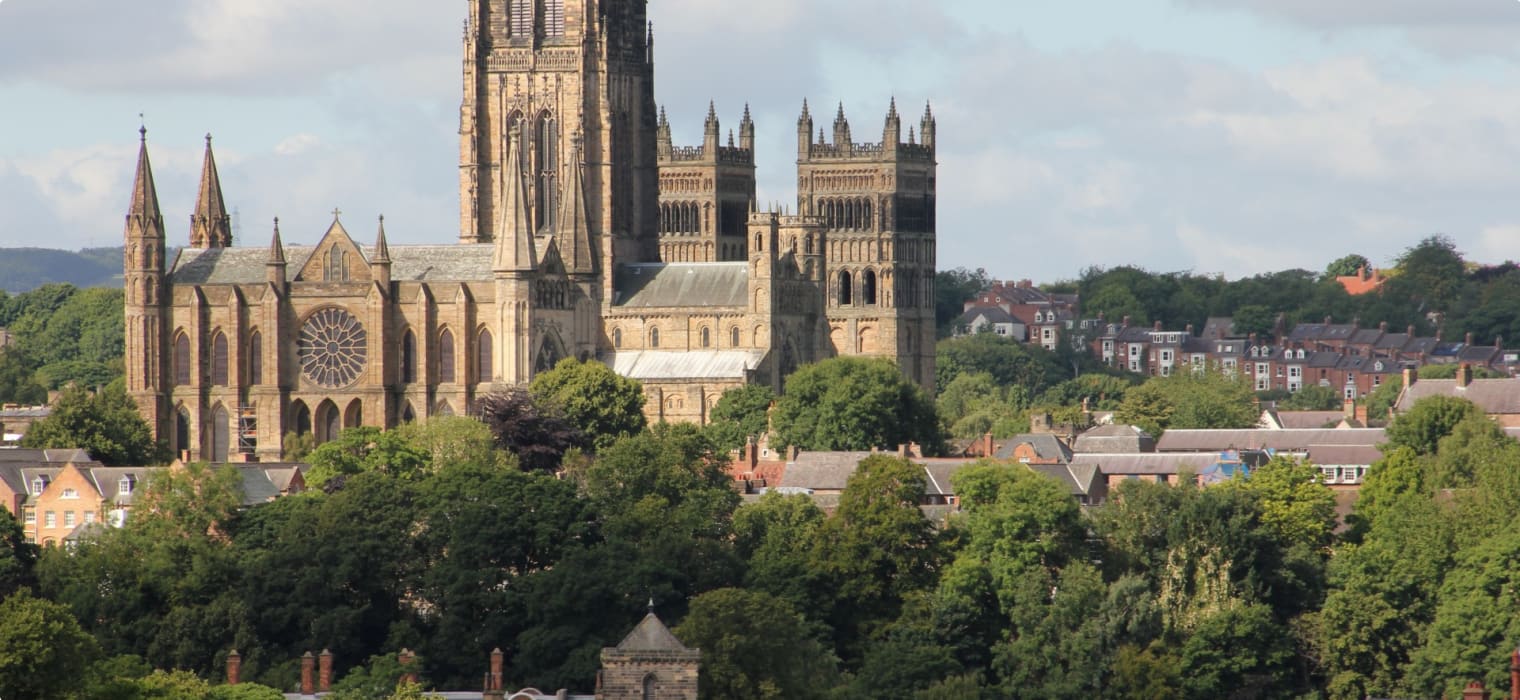
Durham Cathedral
The UNESCO World-heritage listed Durham Cathedral, located in Durham city, is a giant amongst English cathedrals. Standing proudly on a cliff over the River Wear, its central tower rises over 200 feet high for panoramic views of Durham and the surrounding landscape. Constructed between 1093 and 1133, the cathedral is the largest and finest example of Romanesque architecture, with innovative features that foreshadowed later Gothic architecture. It is particularly famous for its stone vaulted ceiling, the oldest surviving example of such a large scale. Other highlights include the twelfth-century Galilee Chapel, which houses medieval paintings and the tomb of the Venerable Bede; the Chapel of the Nine Altars and its stunning Rose Window; St Cuthbert’s relics housed in Durham Cathedral’s museum; and the special collections in the cathedral library, including sets of early printed books, the pre-dissolution monastic accounts, and three copies of Magna Carta.
This article explores the history and unique architecture of Durham Cathedral as background reading for Odyssey Traveller’s 22-day Seven Ages of Britain Tour. This small group tour of British history allows the active senior to spend three weeks gaining an overview of the many changes undergone by the peoples of the British Isles over a 5000-year period, exploring seven periods from the Neolithic to the Victorian era. During this tour, we conduct a day trip to Durham from Newcastle for a guided tour of the town and the Norman Cathedral before having some free time for individual exploration.
Much of the information used in this article is sourced from Simon Jenkin’s book England’s Cathedrals.

History of Durham Cathedral
The site of today’s Durham Cathedral was originally the site of a church constructed in the honour of St Cuthbert, who was transported here by Lindisfarne monks in 995. The monks had initially fled Lindisfarne following repeated Viking raids and had been wandering through Northumbria carrying Saint Cuthbert’s relics with them when they found the site. The story goes that one day the coffin suddenly became too heavy to be moved, at which point a cow bolted over to stand fast a rocky outcrop overlooking the River Wear. Taking this as a sign from the saint, the monks chose to erect the church on that spot.
After the Conquest, the Normans appreciated the site’s military value and supplied it with a castle, a Benedictine monastery and, from 1093, a cathedral. The cathedral was designed and built by Bishop William of St. Calais, who had been appointed by William the Conquer in 1080. After demolishing the old Saxon church, he laid the foundation stone of the great new cathedral on 11 August 1093. Construction was completed in 1133, with the cathedral including a nave, transepts, and choir, and with St Cuthbert’s shrine as its centrepiece. It was soon among the most popular pilgrim destinations in England.
Built intentionally to the south of Durham Castle, the two buildings formed a formidable defensive position for the Normans against attacks form the north. Durham city at this time was one of the most important outposts for the Normans, targeted frequently for incursion. In return for protecting the northern boundaries, the Bishops of Durham were given virtual autonomy in their ruling and thus held significant religious and secular power. They held their own parliaments, issued taxes, raised armies, administered justice, and minted their own coins. In fact, while still owing allegiance to the king in London, they lived like kings themselves in their palaces at Durham and Bishop Auckland.

Durham’s Exterior
Durham’s present cathedral remains essentially that which was built by the Normans, although reconstructions and major additions to the exterior have been made. The Galilee Chapel and the Chapel of the Nine Alters were added in the 12th and 13th centuries respectively, and the central tower is a 15th century design. The rest remains what many consider the foremost example of an English Romanesque structure (often referred to as Norman architecture). This makes it quite unique as most other important British buildings from the Norman era have been substantially modified to be unrecognizable.
The two original west towers, each a Norman keep in miniature covered in arcading, are spoiled only by the 19th century battlements in place of what were once spires. The cathedral’s exterior was also scraped in the 18th century, losing its ancient stonework and caving. Although the original stone must have been heavily eroded, we can never know what wonders were lost.
The central tower replaced the original when it was damaged by lightning in the late 15th century. It is a curious design, seemingly concluding with battlements above the bell stage before finding a second wind and surging up a further stage.

Meanwhile, on the west end of the cathedral juts the Galilee Chapel. According to legend, this was a Lady Chapel originally intended for the cathedral’s east end. However, the misogynist St Cuthbert’s ghost was against women coming to his shrine and so undermined each attempt at a foundation. It’s more likely that its creator, the 12th century Bishop de Puiset, was the real misogynist. A line in the nave still marks the point beyond which he would not allow women to pass into his church. Stone shafts were later added to the each of the marble pillars of the chapel and the foundations were strengthened with huge buttresses to prevent it slipping into the river.
Instead of the Galilee Chapel, the eastern side of the Cathedral now holds the Chapel of the Nine Alters. It gets its name from the nine altars that were provided to accommodate the crowds of pilgrims that wished to attend mass and receive blessings each day during the Middle Ages.
On the north door of the building, a fearsome Romanesque sanctuary knocker survives, featuring the face of a gruesome lion-like beast. In the Middle Ages, a fugitive who used this knocker would have been granted 37 days of sanctuary in the cathedral. He was allowed to use this time to either make peace with his enemies or escape before being passed over to the authorities. The present knocker is a replica, with the original being on display in the cathedral’s museum.

Durham’s Interior
Durham’s interior, begun in 1093, is listed as a UNESCO World Heritage Site. The stone ribbed vault of the nave was an important and innovative achievement for its competition date of 1135. Ribs rise to what is in effect a forerunner of a pointed arch (a hall mark of the Gothic style of Northern France that soon followed), with the vault supported by flying buttresses hidden in the aisle roofs. UNESCO has called this an audacious innovation, “a type of experimental model which was far ahead of its time”. Indeed, the pointed arch and ribbed vaults allowed for a more elaborate and complicated ground plan than ever before, and the buttressing made it possible to build the cathedral much taller than usual.
Every moulded feature of the nave, meanwhile, is decorated with carvings of zig zags, lozenges, and spirals. These cover the arcades, triforium, clerestory and main vault. The side walls are lined with blind arcading, but otherwise the nave is sculptural and spare. A Decorated window dominated the west end of the nave. It is of seven lights rising towards an arch, where the tracery constricts then bursts into a lovely lily pattern.
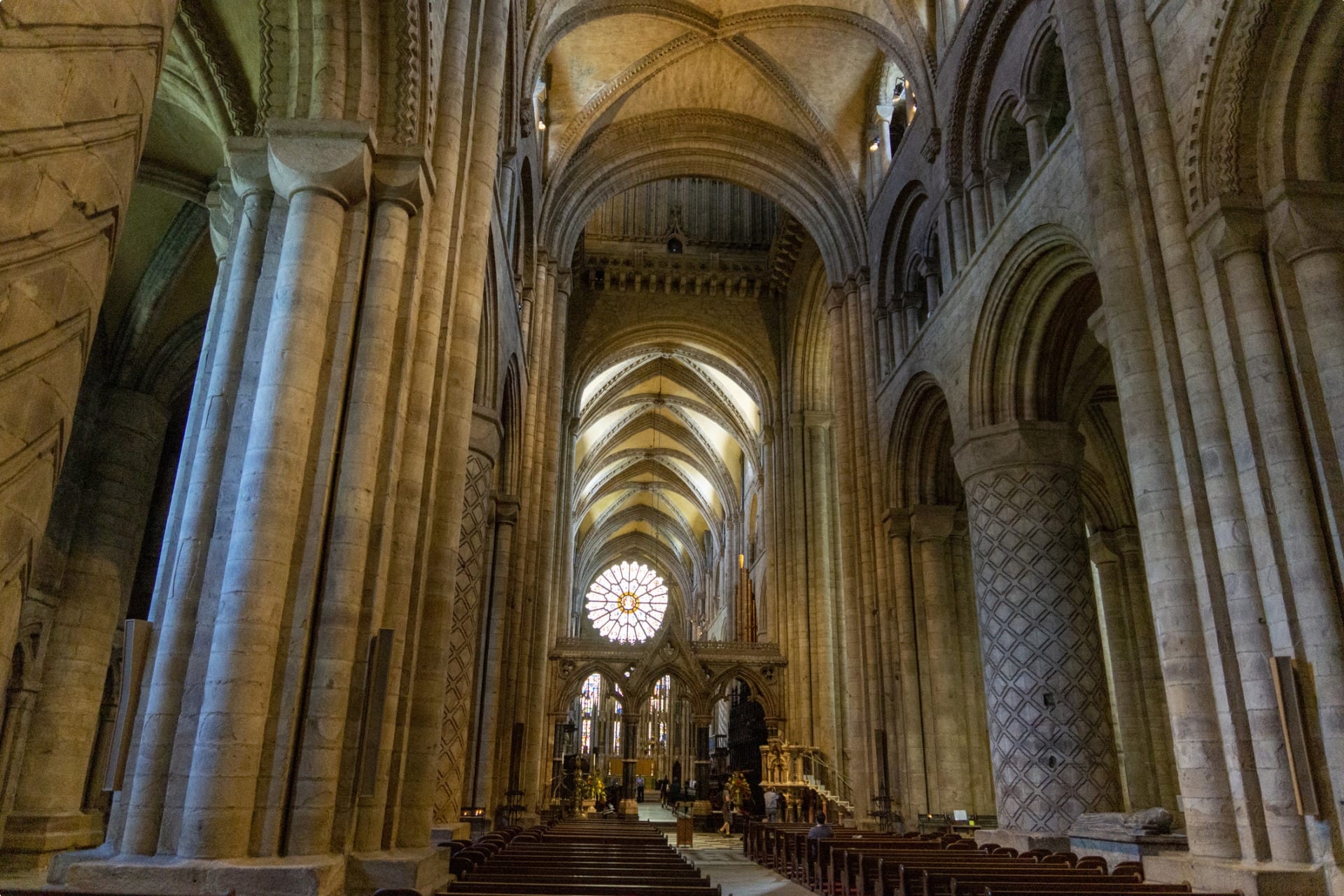
De Puiset’s Galilee Chapel provides an extraordinary contrast to the nave. The arcades are still Norman, but they have far less potency than those of the nave. Despite the fact pointed arches had already arrived in England when the chapel was built circa 1175, it utilises old-fashioned round arches on spindly piers in a basilica-like chamber. On the north side of the chapel is the black marble-topped tomb of the Venerable Bede, considered by many to be one of the most important historians of the Early Middle Ages. On the chapel walls, meanwhile, are medieval paintings and the windows are made of medieval glass.
The choir stalls, installed in 1665, are in the gothic form, beyond which stands a grandiloquent bishop’s throne (said to be even taller than the Pope’s in Rome). East of the throne stands the Neville screen and flanking sedilia. The screen, which soars upwards, would have originally been brightly painted and gilded. It also used to hold 107 alabaster statues, but they were removed by the monks of Durham during the Reformation to prevent their destruction. In the adjacent choir stall, modern art fills the windows.
To the east, the cathedral’s architecture changes gear. Here, the magnificent retrochoir, called the Chapel of Nine Altars, is built in the Early English Gothic style. Its copious Purbeck marble echoes the interior at Salisbury. Norman arcades are replaced by slender lancets, and it comprises large expanses of glass rather than expanses of stone. The magnificent Rose Window, ninety feet in circumference, lies above the chapel, depicting Christ surrounded by the twelve apostles. The chapel was in effect a great hall where crowds would have awaited their moment at the shrine of St Cuthbert, placed directly on a platform behind the high altar. The original shrine was destroyed at the Reformation, but Cuthbert’s various relics survived, now in the cathedral’s museum.
Tour of Durham Cathedral

Odyssey traveller visits Durham Cathedral during our of our 22-day Seven Ages of Britain Tour, This small group tour for mature and senior travellers starts in Scotland and finishes in England, exploring seven periods in Britain’s long history, including: the Neolithic Age; impact of the Romans; arrival of the Saxons; era of the Vikings; Norman conquest and rule; Tudor period and the Age of Enlightenment; and the impact of the Victorians and the Industrial Age.
We begin in Orkney, Scotland, where we stroll through some of Europe’s best-preserved Neolithic and Viking monuments, before flying south to Newcastle, England and then travelling on through the quaint villages and hidden gems of York and Cambridge, before ending in London for a further exploration of the wonders of the United Kingdom’s capital. We visit Durham on a day trip from Newcastle for a guided tour of the town and the Norman Cathedral before having some free time for individual exploration. We also enjoy other splendid cathedrals in Ely, York, and Norwich during this tour.
You can also marvel at some of Europe’s most amazing cathedrals including Wells Cathedral, Ely Cathedral, and Canterbury Cathedral during our Medieval England Tour. Other cathedrals we enjoy visiting on this tour include Salisbury Cathedral, Bristol Cathedral, Hereford Cathedral, Leicester Cathedral, Norwich Cathedral, Winchester Cathedral, and Worcester Cathedral. We also view Liverpool Cathedral, the world’s largest Anglican cathedral, during our Liverpool, Newcastle, Glasgow Tour.
Odyssey Traveller has been serving global travellers since 1983 with educational tours of the history, culture, and architecture of our destinations designed for mature and senior travellers. We specialise in offering small group tours partnering with a local tour guide at each destination to provide a relaxed and comfortable pace and atmosphere that sets us apart from larger tour groups. Tours consist of small groups of between 6 and 12 people and are cost inclusive of all entrances, tipping and majority of meals. For more information, click here, and head to this page to make a booking.
Articles about Britain published by Odyssey Traveller.
- Understanding British Churches
- Studying Gargoyles and grotesques
- Georgian Architecture
- London’s Victorian Architecture
- Traveller’s Guide to Medieval England
- Landscapes of Medieval England
For all the articles Odyssey Traveller has published for mature aged and senior travellers, click through on this link.
External articles to assist you on your visit to Britain.
Related Tours

22 days
Apr, SepSmall group tours Medieval England
Visiting England
A small group tour of England focused on Medieval England and Wales. Spend 21 days on this escorted tour with tour director and local guides travelling from Canterbury to Cambridge, passing through Winchester, Salisbury, Bristol, Hereford and Norwich along the way. Castles, villages, Cathedrals and churches all feature in the Medieval landscapes visited.
From A$14,665 AUD
View Tour
22 days
Apr, AugSeven Ages of Britain, snapshots of Britain through the ages.
Visiting England, Scotland
This guided small group tour starts in Scotland and finishes in England. On Orkney we have a day tour to the UNESCO World heritage site, Skara Brae, before travelling to city of York. Your tour leader continues to share the history from the Neolithic to the Victorian era. The tour concludes in the capital city, London.
From A$15,995 AUD
View Tour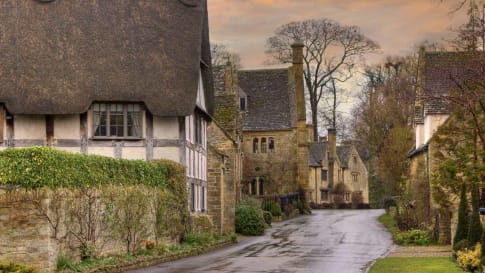
19 days
Jun, SepEngland’s villages small group history tours for mature travellers
Visiting England
Guided tour of the villages of England. The tour leader manages local guides to share their knowledge to give an authentic experience across England. This trip includes the UNESCO World heritage site of Avebury as well as villages in Cornwall, Devon, Dartmoor the border of Wales and the Cotswolds.
From A$16,995 AUD
View Tour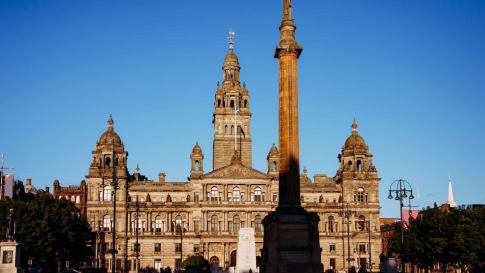
From A$13,915 AUD
View Tour
6 days
Apr, SepLondon Short Tour
Visiting England
A small group tour of London is a collection of day tours that visit and explore through the villages of the city. This escorted tour includes a journey out to Windsor castle. We explore Contemporary and learn about Roman Walled city, Medieval, Victorian London and the contemporary city today.
From A$6,995 AUD
View Tour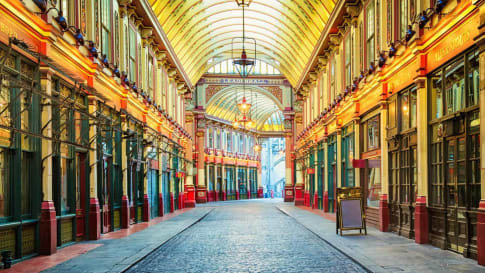
21 days
Sep, JunQueen Victoria's Great Britain: a small group tour
Visiting England, Scotland
A small group tour of England that explores the history of Victorian Britain. This escorted tour spends time knowledgeable local guides with travellers in key destinations in England and Scotland that shaped the British isles in this period including a collection of UNESCO world heritage locations.
From A$15,880 AUD
View Tour22 days
AugRoman Britain
Visiting England
On this small group tour explore with a tour director and local guides the world of Roman Britain. The Romans occupied Britain for some 400 years and left behind a lasting legacy from roads Hadrian's wall to Roman Baths many are UNSECO World heritage listed.
From A$14,545 AUD
View Tour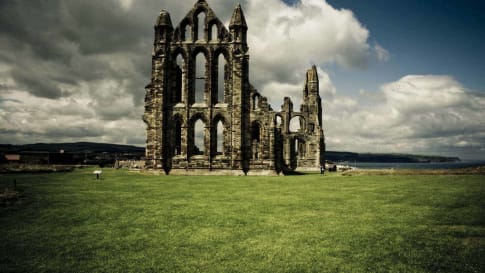
22 days
Sep, JunRural Britain | Walking Small Group Tour
Visiting England, Scotland
A walking tour into England, Scotland and Wales provides small group journeys with breathtaking scenery to destinations such as Snowdonia national park , the UNESCO world heritage site Hadrians wall and the lake district. each day tour provides authentic experiences often off the beaten path from our local guides.
From A$15,880 AUD
View TourRelated Articles
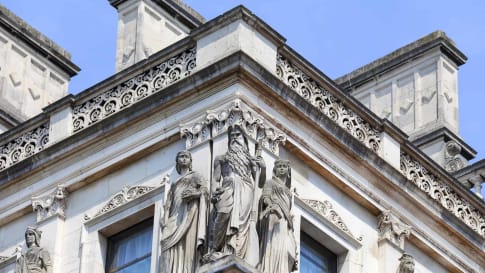
British Neoclassical Architecture & Decorative Arts
Article about the influences on Neoclassical architecture and the decorative arts in the Georgian period. Odyssey Traveller is an Antipodean travel company serving World Travellers since 1983 with small group educational tours for senior couples and mature solo travellers.

British Village Icons: Definitive Guide for Travellers
Icons of the British Villages: Pubs and Cottages The British pub and cottage figure prominently in the image of a (often romanticised) quintessential “British village”. In this article, we will give special attention to these…

Discovering Medieval Chester: A Thriving Trade Centre
Article about Chester, England for small group educational tours for senior couple and mature solo travellers to England. Articles to support your travel plans to explore England, Scotland, Wales and Ireland.
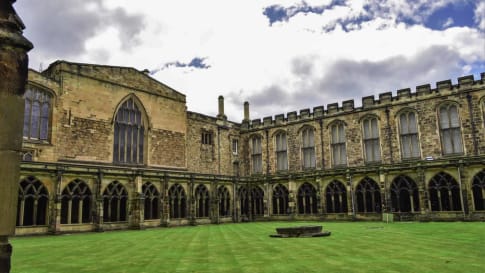
Durham, England
Durham is a city steeped in history and packed full of hidden gems. Explore this UNESCO World Heritage city on Roaming Rural England . This small group has a guided visit of Durham Cathedral and walks the city.
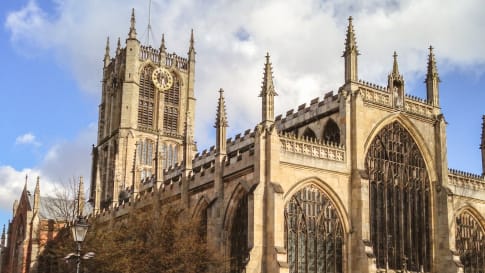
England's Cathedrals
Article about the Cathedrals of England, the design, place and history and their settings for travellers curious about places such as York, Salisbury, Winchester, Ely, Chester, Canterbury or London where the church was a beacon linking the pilgrims paths as well through to Europe. This article links to understanding Britain's churches. An Antipodean travel company serving World Travellers since 1983 with small group educational tours for senior couples and mature solo travellers.

Pilgrimages of the World- Advice for Seniors & Mature travellers
Pilgrimage routes and walking tours Several pilgrimage tracks remain intact and active centuries after they were first established. Many Odyssey tours trace their routes, walking in the footsteps of people […]
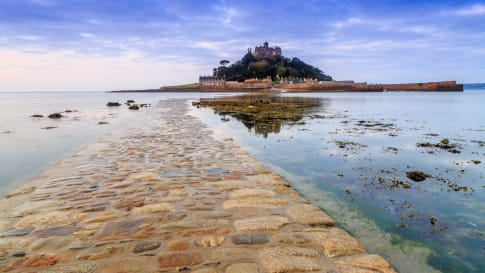
St Michael's Mount, England
The counterpart to Mont St Michel. On the Devon and Cornwall escorted small group tour for senior and maturer travellers the group learn about the abbey of St Michael's mount built in the middle ages complete with gargoyles and grotesques.

Studying Gargoyles and Grotesques: The Definitive Guide for Travellers
Article to support world travellers since 1983 with small group educational tours for senior couples or mature solo travellers interested in British and European history.

Understanding British Churches: The Definitive Guide for Travellers
British Churches Through the Years “How old is this church?” asks Mary-Ann Ochota in a chapter of her book, Hidden Histories: A Spotter’s Guide to the British Landscape (Francis Lincoln, 2016, p. 250). In this article, we…


